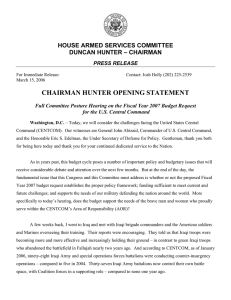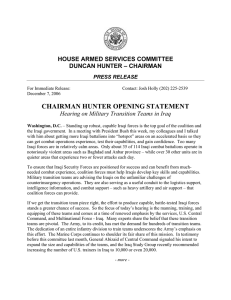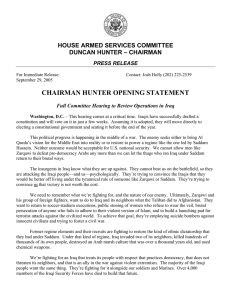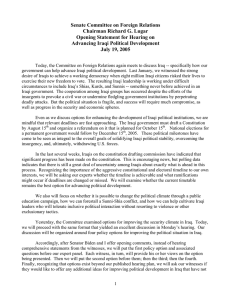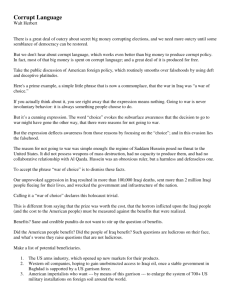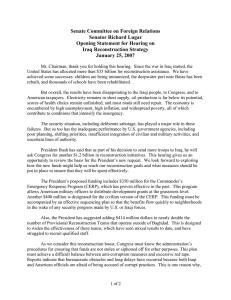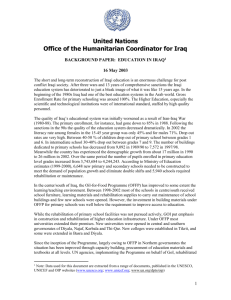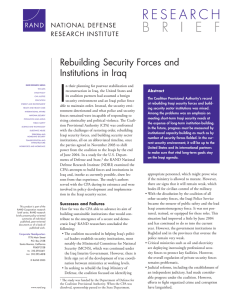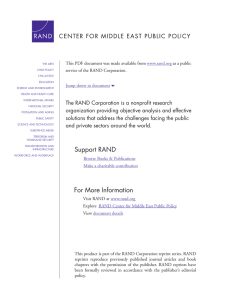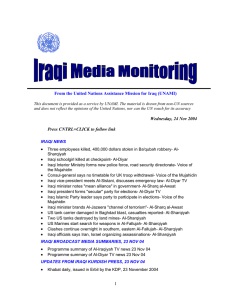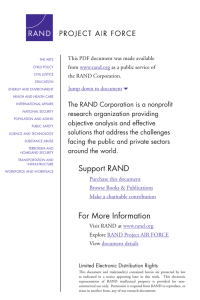Operation IRAQI FREEDOM Decisive War, Elusive Peace
advertisement
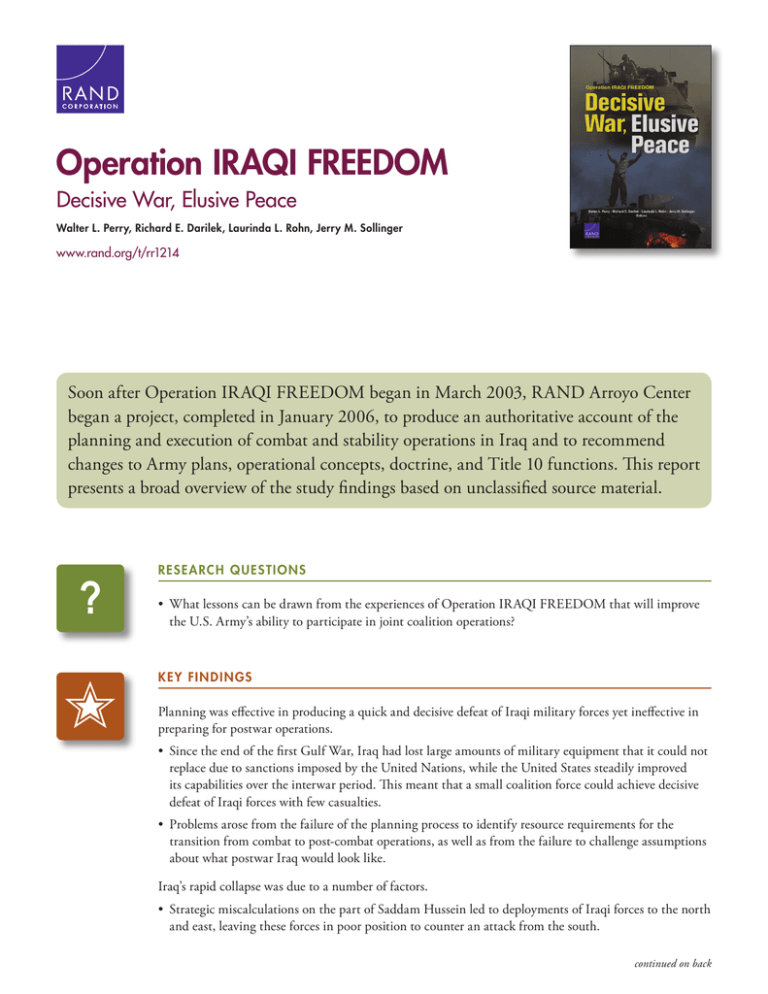
C O R P O R AT I O N Operation IRAQI FREEDOM Decisive War, Elusive Peace Walter L. Perry, Richard E. Darilek, Laurinda L. Rohn, Jerry M. Sollinger www.rand.org/t/rr1214 Soon after Operation IRAQI FREEDOM began in March 2003, RAND Arroyo Center began a project, completed in January 2006, to produce an authoritative account of the planning and execution of combat and stability operations in Iraq and to recommend changes to Army plans, operational concepts, doctrine, and Title 10 functions. This report presents a broad overview of the study findings based on unclassified source material. ? ✭ RESE A RC H Q U ESTI O NS • What lessons can be drawn from the experiences of Operation IRAQI FREEDOM that will improve the U.S. Army’s ability to participate in joint coalition operations? K E Y FI N D I N GS Planning was effective in producing a quick and decisive defeat of Iraqi military forces yet ineffective in preparing for postwar operations. • Since the end of the first Gulf War, Iraq had lost large amounts of military equipment that it could not replace due to sanctions imposed by the United Nations, while the United States steadily improved its capabilities over the interwar period. This meant that a small coalition force could achieve decisive defeat of Iraqi forces with few casualties. • Problems arose from the failure of the planning process to identify resource requirements for the transition from combat to post-combat operations, as well as from the failure to challenge assumptions about what postwar Iraq would look like. Iraq’s rapid collapse was due to a number of factors. • Strategic miscalculations on the part of Saddam Hussein led to deployments of Iraqi forces to the north and east, leaving these forces in poor position to counter an attack from the south. continued on back • Saddam was preoccupied with internal threats to his person as well as his regime, leading him to shape his forces with an eye to forestalling coups rather than defending the country. • Shortcomings in planning, leadership, command and control, coordination, battlefield positioning, situational awareness, and training plagued the Iraqi forces and severely diminished morale among troops. • The glaring weakness of the Iraqi forces limits the lessons that can be drawn from this conflict. The authorities and procedures established to exercise command and control over coalition and U.S. forces consisted of a combination of doctrinal and ad hoc constructs that worked reasonably well throughout Operation IRAQI FREEDOM. Situational awareness did not always go as well as it could have during Operation IRAQI FREEDOM. • Battle damage assessment (BDA)—necessary to make the ground commander aware of the effectiveness of the enemy about to be faced—often was not available to commanders because the assets used to conduct BDA were given other, higher-priority tasks. • Sensor coverage of the battlespace was unprecedented, but did not alone translate into situational awareness. Timely processing and dissemination are needed as well, as is information at an appropriate level of resolution, to be useful to tactical commanders. Success of information operations (IO) in Operation IRAQI FREEDOM is hard to determine because of the difficulties associated with linking the IO actions taken to effects directly attributable to those actions. Postwar operations struggled to develop an approach to reconstructing Iraq. • Lack of sufficient prior planning for the peace contributed directly to the civil unrest that followed once the war’s major combat operations came to an end. • The single most important failure in the postwar planning and execution process was the failure to assign responsibility and resources for providing security in the immediate aftermath of major combat operations. • Prewar planning assumptions and expectations were not seriously challenged, even as postwar events began to indicate that most of those assumptions were invalid. Deployments to the Gulf using the Request for Forces (RFF) process was more agile than traditional deployment procedures, but had disadvantages as well. • Approval of each RFF at the Secretary or Deputy Secretary of Defense level opened the deployment process to micromanagement. • A new support concept called Distribution Based Logistics worked overall, but encountered problems for all classes of supply other than fuel. The United States will continue to need a balanced mix of land forces to accomplish a broad range of future missions. • These forces will range from small, light special operations forces to large, heavily armored and mechanized forces. • Urban combat is unavoidable when the United States has to occupy a country or region and will require combined arms teams well supported by air forces. A RRO YO CENT ER RAND Arroyo Center is the Army’s federally funded research and development center for studies and analyses. Its mission is to help Army leaders make decisions that are informed by objective, high-quality analysis. For more information visit Arroyo’s website at www.rand.org/ard.
